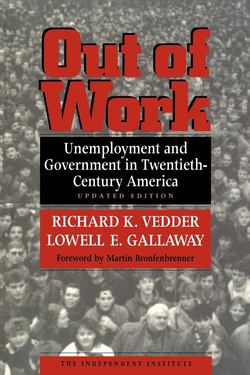Читать книгу Out of Work - Richard K Vedder - Страница 18
На сайте Литреса книга снята с продажи.
The Importance of Unemployment
ОглавлениеWhy has unemployment become such a major policy issue as the United States has moved through the twentieth century? Why does it seem to dominate the nation’s thinking whenever there is any significant rise in it, as occurred, for example, in the early 1990s? Possibly, this increased concern with the phenomenon can be traced to its present magnitude being appreciably higher than in the earlier part of the century. Perhaps unemployment is truly a more serious problem today than previously. However, the evidence in this respect is mixed. On the one hand, counterbalancing the higher absolute level of the unemployment rate, the variability of unemployment has possibly narrowed with the passage of time. At the same time, though, certain unemployment differentials, especially the racial one, appear to have widened. But in the other direction, what about the growth of public “social safety-net” programs designed to lessen the economic distress generated by unemployment? Do they, or do they not, make unemployment less of a problem?
There are, in fact, no clear answers as to why unemployment has increased in importance. Changes in its actual incidence do not seem to offer any clearcut clues. This may be due to unemployment being, more than anything else, a somewhat complex psychological problem. Today, data describing the actual unemployment rate are much more readily available than in the early part of this century. Every month, like clockwork, usually on the first Friday, the Bureau of Labor Statistics announces its estimate of the previous month’s unemployment rate. Thus, there is much greater general knowledge of the volume of unemployment. In turn, what becomes important to people is the current level of unemployment compared to the level that they anticipate. If they are expecting double-digit levels for the unemployment rate, as existed in late 1982 and early 1983, single-digit levels seem wonderful. On the other hand, if they have become accustomed to low-level single-digit numbers, such as the 5.1 to 5.3 percent unemployment rates that marked 1989, an increase of as little as two percentage points can seem to represent a dramatic deterioration in the unemployment situation.
As a consequence, in combination with the greater knowledge of current levels of unemployment, the very existence of variability in its level, even though it be less than in earlier years, becomes the basis for the importance attached to unemployment in the arena of public policy. Changes in unemployment seem to have become at least as important, if not more so, than its actual level. Therefore, any understanding of the contemporary view of the unemployment problem requires insight into the sources of variation in the unemployment rate.
